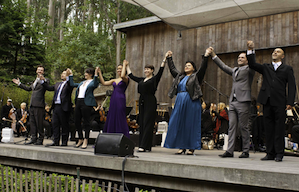East-West Fête, Gratis
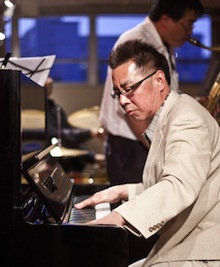
Photo by J. Astra Brinkmann
Portsmouth Square serves as the venue for the third annual free Chinatown Music Festival, from 11 a.m. to 5 p.m. on Aug. 25.
Lion dance, dragon dance, martial arts, Chinese healing arts, painting, and calligraphy will all be on view, in addition to music of all kinds — even a neo-classical fusion piece, which may also be viewed as a pro-City Hall statement in a great urban controversy.
A special feature of the festival is renowned pianist Jon Jang premiering his commissioned work, Central Pacific, Central Subway, celebrating the contributions of Chinese workers who built the first Transcontinental Railroad and linking it to the current MUNI transportation project. The commission is made possible by the Chinese Culture Center and the San Francisco Arts Commission Central Subway Art Project.
"Just as historical political leaders Abraham Lincoln and Dr. Sun Yat-sen shared a vision of the railroad as an important way to unify their respective countries," says Jang, "the Central Subway will help unify San Francisco and enhance Chinatown’s role as a cultural destination for all."
The other side of that coin is the intense opposition to the $1.6 billion, nine-year project constructing a 1.7-mile lightrail line through the center of the city to Chinatown, but the naysayers have no music to back up their arguments, much less a commissioned premiere.
Festival activities include tea tasting, crafts, games, cultural demonstrations, and the last chance to view the exhibition of Adrian Wong’s work, "Orange Peel, Harbor Seal, Hyperreal," in the CCC Gallery.
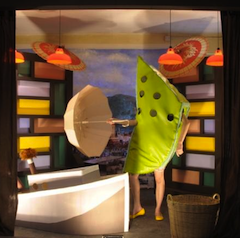
The Chinese Culture Center is a partner of the America’s Cup and this year’s festival will honor the races with the corny but spot-on theme, "America’s Cup of Tea."
"The festival is a celebration of The City’s diversity," says Mabel Tang, CCC executive director. "It will help contribute to the cultural and economic vitality of Chinatown, and continue to bring together visitors and residents."
Francis Wong, creative director of Asian Improv aRts, one of the participating organizations, speaks of the festival as "a deeply satisfying opportunity to add my sound to the community I've been a part of since I was a kid. I am 55 now, and my Chinese heritage is core to my expressions as a jazz artist."
Wong is joined by performers of a wide variety of music — Latin jazz by the John Calloway Quintet, Jest Jammin’ R&B, traditional Chinese cultural arts from the Yellow River Drummers, and many more.
Portsmouth Square is among the city's oldest public areas, going back to the days of the Mexican community of Yerba Buena, whose name was changed to San Francisco in 1847. During the Mexican-American War, the USS Portsmouth was ordered to seize Yerba Buena, and on July 9, 1846, the first American flag was raised near the Mexican adobe custom house in the plaza that would eventually be named Portsmouth Square in honor of the ship.
Opera in the Grove is Definitely in the Groove
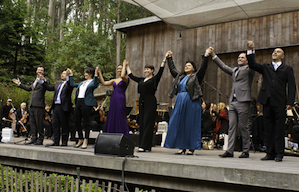
Photo by Scott Wall
Busy with Saturday night's Merola Grand Finale and other matters, Music News gratefully yielded coverage of Sunday afternoon's Stern Grove opera program to Suzanne Turley, one of the city's (country's?) most fervent opera fans and vital supporters of young artists.
She, along with many others, has long been disgruntled with the Stern Grove management for first dropping the annual Merola program, almost two decades ago, then putting opera in general on the back burner, among other crimes and misdemeanors. And yet, here she is, the fan known on the web as "OperaSuzy," admitting:
After all my kvetching about the Grove management, once there, I had to put that aside because it was a really Grand Opera afternoon. It was an event that could — should — have gone on forever as it was on such a high and wonderful level from everyone.
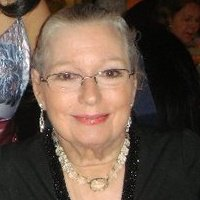 The context to Turley's relationship with the Grove: It was the venue for her first experience with staged opera, when her parents took her to a Pacific Opera Rigoletto in 1950. To this day, she remembers it all (except who sang the title role):
The context to Turley's relationship with the Grove: It was the venue for her first experience with staged opera, when her parents took her to a Pacific Opera Rigoletto in 1950. To this day, she remembers it all (except who sang the title role):
The Duke was Cesare Curzi who sang with S.F. Opera on the advanced Adler Fellow level. Arturo Casiglia was in the pit. Peggy Overshiner was Gilda and John Lombardi was the Assassino. Dang, the hunchback's name fails me.The Grove was less chopped up than it is now. No amplification, natch. Old flats and potted bushes for sets. Sitting on the wall at the rear I heard every note well, if not loudly.
I went backstage — easy then — totally star-struck by the young tenor who became a mentor of a kind. Between him and the music teacher at my school, I got to super in a couple of shows at the original Berkeley Opera and Woodminster in Oakland. And I was a goner for opera both on the radio and that first foggy day in the Grove.
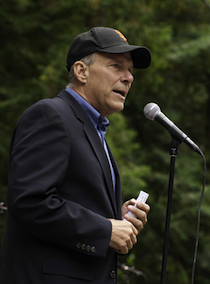
Anybody who first met Michael Fabiano in the Met HD The Audition a few years ago would hardly recognize him today — except that he has become the wonderful artist he said he was at the time. Humility and maturity have set in, and what a voice, what a talent. He sang from Il Corsaro, Lucia, Manon (Massenet), Le Villi, L'Arlesienne, and La bohéme. All of impressive vocalism, beauty of tone, and grand musicianship.And the facility?Leah Crocetto, whom most of us have been following with glee since her Merola days not so long ago, has arrived. Fresh from her major triumph in Santa Fe where she sang her last performance in Maometto II just days before, she knocked it out of the park with "Si Firete!... Madre, a te" from the Rossini.
Many of us have considered her to be mostly a budding Verdi spinto, but this certainly changed that perception. She glided through all the labyrinth of Rossini as if it were easy. David Gockley said when introducing the pair, to put us at ease, both will be back on our main stage a lot. Thank you!
Crocetto went on to enthrall us with the first act closing scena from Lucia with Fabiano, and the smoldering San Sulpice duet from Manon also with Fabiano.
Adler fellows Joo Wan Kang, Laura Krumm, and Nadine Sierra all shone in arias and duets. Concertmaster Kay Stern, in a rare instrumental solo, played the "Meditation" from Thais. Giuseppi Finzi was in his element with the fabulous S.F. Opera Orchestra.
Stern Grove is less user-friendly by a whole lot. I wonder how they got away with removing the Porta Potties stage left, ugly as they were. I don't think there are easily accessible toilets for anyone who could not walk a long way on uneven and difficult terrain. That does not work for a lot of people. My feeling is that they are favoring the young and fit.
Where in the World Will the SFS Be?
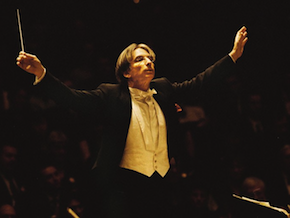
According to Askonas Holt, the big international arts management agency handling orchestra tours, the San Francisco Symphony is expected in these venues:
* Nov. 7, Macau Cultural Center
* Nov. 8-9, Hong Kong Cultural Center
* Nov. 10-11, National Concert Hall Taiwan
* Nov. 14-15, Shanghai Oriental Arts Center
* Nov. 16, National Centre for the Perfoming Arts, Beijing
* Nov. 19, Suntory Hall, Tokyo
* Nov. 20, Bunka Kaikan, Tokyo
On the program (not all at one concert): Mahler’s Symphony No. 5, Rachmaninov’s Symphony No. 2, works by John Adams, Henry Cowell, and Lou Harrison. Beijing-born pianist Yuja Wang (a New York resident, who says her second home is San Francisco) is soloist on the tour in Prokofiev’s Piano Concerto No. 2 and Rachmaninov's Rhapsody on a Theme of Paganini.
In March, the orchestra returns to New York’s Carnegie Hall for two concerts, and one each in Newark and Washington, D.C. Repertoire includes Mahler’s Symphony No. 9, Brahms’s Symphony No. 1, the New York premiere of Samuel Carl Adams’s new work Drift and Providence, and Beethoven’s Piano Concerto No. 4 with Yuja Wang (in New York and Newark).
Carmina Burana Snobbery Restrained in Reviews
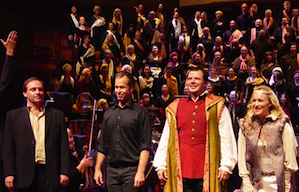
Photos by Michael Strickland
Reporting from the San Francisco Choral Society's concert in Davies Symphony Hall on Aug. 17, also reviewed in this edition of SFCV, Michael Strickland — usually a hypercritical critic — was unexpectedly pleased by the centerpiece production:
Carl Orff's Carmina Burana is an odd duck, a 1937 dramatic cantata taken from poems and drinking songs written in bastardized Latin and Low German from the 11th to 13th centuries, discovered in a Benedictine monastery in 1803. Orff put together a collection of 25 of these pieces, starting with the famous "O Fortuna" chorus that has been quoted, sampled, copied and overused in hundreds of movie, TV, and videogame soundtracks. Partly because of its ubiquity, Carmina Burana is greatly beloved by audiences while scorned by many musicians and snobbish listeners.
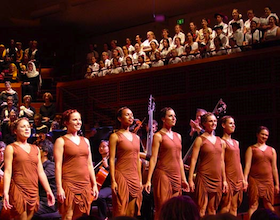
You can put me into the snob group since Carmina Burana was one of the first LPs I bought as a 'tween decades ago, along with Rimsky-Korsakov's Scheherezade and Rodrigo's guitar concertos, on the suggestion of a record store clerk who was trying to be kind to a classical music newbie.And yet and yet...The only problem was that on my own I discovered a set of Bruno Walter's complete Brahms symphonies (the mono version) and Bernstein's complete Mahler symphonies, and both Carmina Burana and Scheherezade soon sounded dull and hackneyed in comparison. (The Rodrigo guitar concertos, oddly enough, still delight me.)
[The large amateur chorus] sang very well, including some of the softest pianissimos imaginable for such a large group, interspersed with the loud, percussive chanting style for which the piece is famous ...Between the "Wheels of Fortune" opening and close, Carmina Burana is broken up into three sections, starting with a pastorale, "In The Meadow," which is when the seven-woman Perceptions Contemporary Dance Company danced in front of the stage and up the orchestra section aisles. They occasionally gave each other lifts, Mark Morris gender-neutral style, and at other points looked like they were trying to channel Isadora Duncan. There were moments of silliness, but it worked well with the music ...
Soloists Eugene Brancoveanu and Marnie Breckenridge acted their various roles convincingly in a series of costumes illustrating "The Tavern" and "Courtly Love," and both of them sounded great, easily filling up Davies, which is not easy in that large hall. With contributions by the Contra Costa Children's Chorus led by Martin Benvenuto, the entire evening felt both grand and homespun.
YYT Falls Into the Gap
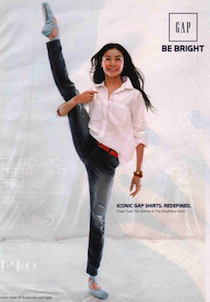
In these trying months of the long San Francisco Ballet hiatus, any news from the world of dance will do, so how about company star Yuan Yuan Tan becoming a Gap model?
If you want to see her — along with Heidi Klum for Jordache, Élise Crombez for Theyskens' Theory, and more — New York magazine offers a slideshow of the ads.
Comments DanceSpirit magazine:
Called Shine, the marketing campaign recognizes "emerging artists and musicians who inspire people creatively to make their mark on the world," according to the company’s chief marketing officer. (Not sure if we’d call Tan, a veteran SFB principal, "emerging," but she’s definitely inspiring!) Also on the lineup are musicians Karmin, Lia Ices, the Avett Brothers, Kaki King and Nicki Bluhm.In addition to appearing in ads in a bunch of national magazines, we found Tan in the September issue of Women’s Health — the group will be showcased in videos and how-to tutorials on Gap’s social media outlets.
From the Backstage Story of Weill Hall
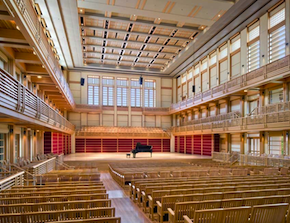
Sonoma State University's Green Music Center, due to open next month, has had a long, hard time getting completed until the arrival of Sanford and Joan Weill (and some faculty opposition continues). The famed and controversial financier and his wife invested an initial $12 million to complete the center's heart, a splendid concert hall, now named after the generous donors.
A pivotal figure both in the rise and fall of Citigroup, Weill built it into the world's largest financial services network, and then presided over its descent into the global financial crisis of 2008 and a multi-billion dollar rescue by the U.S. government. (Weill left Citigroup in 2006, and today Citi has a $420 billion surplus.)
Last week, Weill, 79, shocked the financial world again, this time by saying during a CNBC interview that large banks should be broken up, investment banking split from traditional banks to prevent excessive growth so that they don't become "too big to fail ... risking taxpayer dollars." Among responses, a New York Times opinion piece called that "a belated apology."
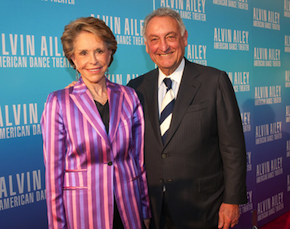
Photo by Teri Bloom
On Sunday, the Weills gave an extensive interview to the The San Francisco Chronicle, dealing with the Green Music Center, their residence in Sonoma (alternating with their Manhattan home), and their background:
The Weills, philanthropists who have donated more than $1 billion of their personal fortune to institutions and nonprofits, are working to turn the Sonoma site into a world-class music center ...Saddened by how bankers have gone from revered to reviled, Joan says, "There are a lot of good people who have done a lot of good things, and now they're all cast as bad. It's class warfare." She notes that an estimated 95 percent of the so-called 1 percent came from the 99 percent, "but you are now pilloried for getting to the 1 percent ..."
The Weills' interest in the music center was sparked when their neighbor in Sonoma, Les Vadasz — he was the fourth employee at Intel and recently helped Sandy send his first e-mail — hosted a welcoming cocktail party for them when they arrived [in 2010]. The Weills learned that the Green Music Center, a $110 million project modeled after Ozawa Hall at Tanglewood, was unfinished as funding had dried up.
Sonoma State President Ruben Armiñana said the Weills visited the center and called him a week later. Armiñana recalled, "Sandy said, 'I have a friend who's going to be in San Francisco, and I'd like for him to come and see the hall and give me his opinion.' Then he said, 'Oh, I forgot to tell you he will be there around 11:30 — at night. And his name is Lang Lang.' " Lang Lang, the superstar classical pianist, arrived at the Sonoma hall at around midnight, after giving a recital at Davies Symphony Hall.
"I played a lot of things, from Bach to Chopin to Rachmaninoff to Beethoven," Lang Lang recalled. "For me, the hall is very similar to Tanglewood. It's really perfect. I love it that you can open it up as an outdoor hall."
The Paper Nautilus in Long Beach
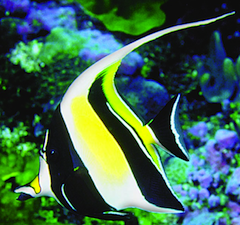
One of the most adventurous and imaginative companies around, Long Beach Opera is going underwater. In addition to seasons completely devoid of warhorses, LBO is now launching an "Outer Limits" series at the Aquarium of the Pacific.
The opening work, Sept. 7-9, is "a magical voyage beneath the sea" — says the press release — with multimedia performances of English composer Gavin Bryars’ The Paper Nautilus. Written for six percussionists, two pianos, and two singers, Bryars’ score will be performed in front of the Aquarium’s three-story 142,000 gallon tank of sea life and coral. It is, the plan goes, the right setting for merging marine life with artistic creativity.
To celebrate the sea, Bryars blends science and verse by drawing from the writings of Lebanese-American poet/artist Etel Adnan, Scottish poet Jackie Kay, French scientist Marie Curie, Pope Leo XIII, and the Bible. LBO Artistic and General Director Andreas Mitisek will conduct, direct and design the performances. Mitisek says:
I am fascinated by Bryars’ atmospheric soundscapes that expand time and space. The Paper Nautilus will be an immersive performance — a moving, fluid picture of the ocean painted through poetry, music, movement, video projections, and the Aquarium’s underwater world."Outer Limits" is a chamber series highlighting "musical outliers," supported by a three-year, $300,000 grant from The Andrew W. Mellon Foundation. Nautilus will feature soprano Ashley Knight; mezzo-soprano Peabody Southwell; dancers from the Nannette Brodie Dance Theatre; video projections by Adam Fleming; lighting by Dan Weingarten; and the Los Angeles Percussion Quartet.
Mitisek's recent productions include Golijov’s Ainadamar (coming to Ensemble Parallèle, Feb. 15-17), Piazzolla’s Maria de Buenos Aires, Lang’s Difficulty of Crossing a Field, Cherubini’s Medea, and Glass’ Akhnaten.

